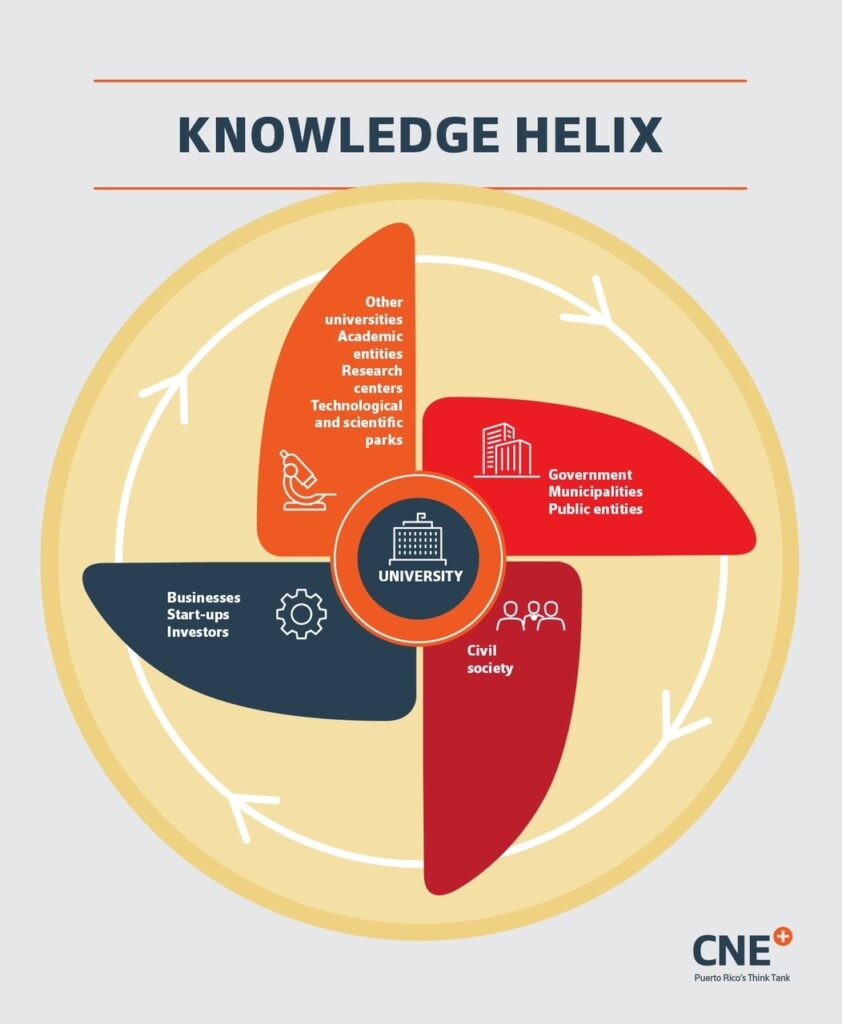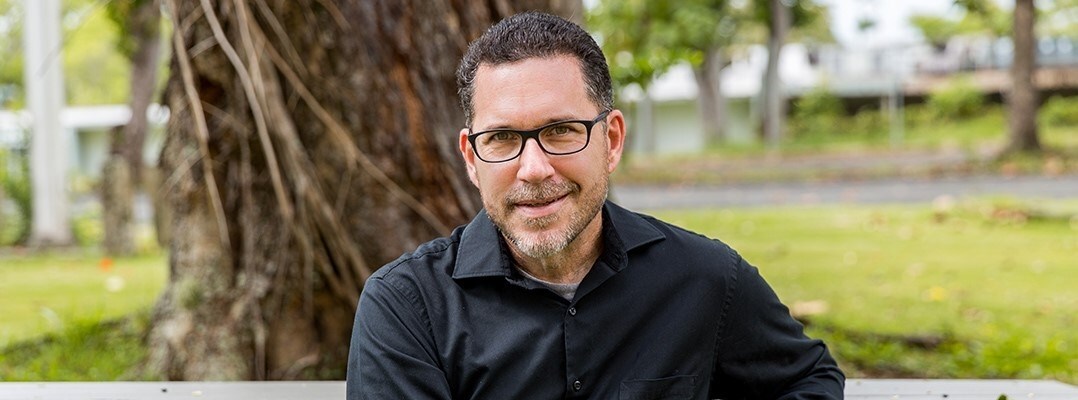
Published on August 17, 2021 / Leer en español
In This Issue
When I was growing up the term “new year” referred more often than not to the beginning of the school year, as my mother was a history teacher and school principal at a Catholic school. As the father of three school-age children, I guess I still measure time, to some extent, in school semesters.
As we commence yet another school year, we are dedicating this edition of the CNE Review to analyzing Puerto Rico’s largest and most important higher education institution, the University of Puerto Rico (“UPR”). First, Raúl Santiago-Bartolomei focuses on the important role the UPR plays in research and development activities in Puerto Rico. Then, we take a look at the UPR’s Fiscal Plan and highlight how some of its elements have affected the financial stability of the state’s university. We follow that with Jennifer Wolff’s essay on the role of the public university for investment and economic development. We conclude with a piece by the CNE Review’s first guest collaborator – UPR Professor Jorge L. Giovannetti-Torres – who shares thought-provoking insights about some of the challenges and opportunities confronting the UPR.
In 1909, Beatrice Webb wrote that the essential role of the state was to “secure a national minimum of civilised life … open to all alike, of both sexes and all classes, by which we meant sufficient nourishment and training when young, a living wage when able-bodied, treatment when sick, and modest but secure livelihood when disabled or aged.” As a society, we still have a ways to go before reaching those basic objectives and whether we will reach them in our lifetime is an open question. What is not open to debate, though, is that we will never achieve that basic, dignified standard of living for all without a strong public university.
—Sergio M. Marxuach, Editor-in-Chief
Insights + Analysis from CNE

UPR’s role in economic development in Puerto Rico: Research and Development
By Raúl Santiago-Bartolomei, Ph.D., Research Associate
Given that it provides higher education for the largest share of total students enrolled, the University of Puerto Rico (“UPR”) is an essential institution in ensuring social mobility in Puerto Rico. Likewise, it is a central institution in furthering the arts and humanities, which are essential disciplines for producing critical thinkers, sensible human beings, and fostering cultural exchanges between Puerto Rico and the rest of the world. In this section, however, we will focus on examining the UPR’s role in research and development (“R&D”) in the archipelago, a basic component of any industrial and economic development policy.
Raúl Santiago-Bartolomei, Ph.D. is now an Assistant Professor at the UPR’s Graduate School of Planning in Río Piedras. CNE is proud to support Raúl in his new role at the UPR, an institution that is essential to Puerto Rico’s economic development. We are happy to announce that Raúl will continue to collaborate with CNE as a researcher.

The UPR’s Certified Fiscal Plan or the Shredding of Puerto Rico’s Social Contract
By Sergio M. Marxuach, Policy Director
The modern social contract in developed societies can be defined as the collective provision of at least some minimum level of public safety, housing, education, and health care, and protections for people of all ages, and people with disabilities.
In the case of Puerto Rico, it has included access to higher education through the operation of a relatively large public university system. For more than a century, the University of Puerto Rico (“UPR”) has provided affordable access to high-quality education to thousands of Puerto Ricans, mostly financed by local taxpayers.
In 1966, the Puerto Rico Legislative Assembly enacted a law mandating that a little bit less than 10% of Puerto Rico’s General Fund be transferred to the UPR every year. In this sense, then, the public support of higher education can be said to have been embedded in Puerto Rico’s social contract for a long time now.
During the last 40 years, though, the UPR has faced increasingly serious administrative, financial, and managerial challenges. Keep reading for an analysis of some of the most important aspects of the Fiscal Plan for the UPR certified on May 27, 2021.

Public University, Investment, and Development
By Jennifer Wolff, Ph.D. – Director, Madrid Policy Bureau
The current trends of technological change, climate risks, and social upheavals make the university as a social institution more relevant than ever. In view of this, what seems to be the dismantling of Puerto Rico’s public university system runs counter to the island’s needs and challenges basic common sense. One would never throw a vessel’s parts overboard when facing a tempest in open seas, but that seems to be what we are currently doing as a society with the University of Puerto Rico (UPR). It then seems pertinent to examine relevant case studies to understand how much the current assault on the UPR limits Puerto Rico’s capacity to face the challenges of the future.

Q&A with Prof. Jorge L. Giovannetti-Torres
Jorge L. Giovannetti-Torres has worked at the University of Puerto Rico in Río Piedras (“UPRRP”) for 20 years where he chaired the Department of Sociology and Anthropology and served as Assistant Dean of Research. For more than a decade, he has written over thirty opinion columns on an ample variety of topics regarding the UPR.
Click the button to read the session with his answers to these and other crucial questions:
![]() What role should the public university play in the future of Puerto Rico? Which vital links should it foster with the rest of the society? Which reforms are necessary?
What role should the public university play in the future of Puerto Rico? Which vital links should it foster with the rest of the society? Which reforms are necessary?
![]() In light of the current state of public finances, did the local government have alternatives to the UPR’s budget cuts or the magnitude of the cuts? What could the UPR have done to better manage the crisis?
In light of the current state of public finances, did the local government have alternatives to the UPR’s budget cuts or the magnitude of the cuts? What could the UPR have done to better manage the crisis?
On Our Radar...
![]() Monetary Policy – The Federal Reserve released its semi-annual Monetary Policy Report on July 9. According to the Fed, “Over the first half of 2021, progress on vaccinations has led to a reopening of the economy and strong economic growth, supported by accommodative monetary and fiscal policy. However, the effects of the COVID-19 pandemic have continued to weigh on the U.S. economy, and employment has remained well below pre-pandemic levels. Furthermore, shortages of material inputs and difficulties in hiring have held down activity in a number of industries. In part because of these bottlenecks and other largely transitory factors, PCE (personal consumption expenditures) prices rose 3.9 percent over the 12 months ending in May.”
Monetary Policy – The Federal Reserve released its semi-annual Monetary Policy Report on July 9. According to the Fed, “Over the first half of 2021, progress on vaccinations has led to a reopening of the economy and strong economic growth, supported by accommodative monetary and fiscal policy. However, the effects of the COVID-19 pandemic have continued to weigh on the U.S. economy, and employment has remained well below pre-pandemic levels. Furthermore, shortages of material inputs and difficulties in hiring have held down activity in a number of industries. In part because of these bottlenecks and other largely transitory factors, PCE (personal consumption expenditures) prices rose 3.9 percent over the 12 months ending in May.”
![]() Supply Chains – “Since the onset of the coronavirus (Covid-19) pandemic in early 2020, policymakers and businesses have shown great interest in strengthening the resilience of global supply chains. In the US, this has translated into discussions about the prospect of reshoring current overseas production—or, more realistically, rooting supply chains within North America at large.” The Economist Intelligence Unit takes a look at the prospects for reshoring supply chains in this white paper.
Supply Chains – “Since the onset of the coronavirus (Covid-19) pandemic in early 2020, policymakers and businesses have shown great interest in strengthening the resilience of global supply chains. In the US, this has translated into discussions about the prospect of reshoring current overseas production—or, more realistically, rooting supply chains within North America at large.” The Economist Intelligence Unit takes a look at the prospects for reshoring supply chains in this white paper.
![]() State Fragility – Political and economic fragility can be described along a spectrum of conditions. According to a recent research paper published by the International Growth Centre at the London School of Economics “divided societies, deficient political leaders, weak institutions, and missing systems of checks and balances are all part of this spectrum. Escaping fragility requires designing policies for greater economic integration and building stronger and more inclusive institutions…Creating an effective and inclusive political class is important for equity, stability, and growth. In addition, it is also important to keep politicians accountable to the constituents they serve.”
State Fragility – Political and economic fragility can be described along a spectrum of conditions. According to a recent research paper published by the International Growth Centre at the London School of Economics “divided societies, deficient political leaders, weak institutions, and missing systems of checks and balances are all part of this spectrum. Escaping fragility requires designing policies for greater economic integration and building stronger and more inclusive institutions…Creating an effective and inclusive political class is important for equity, stability, and growth. In addition, it is also important to keep politicians accountable to the constituents they serve.”
